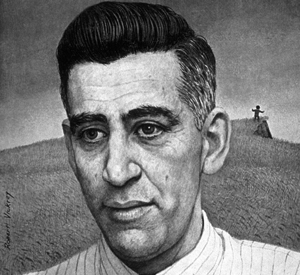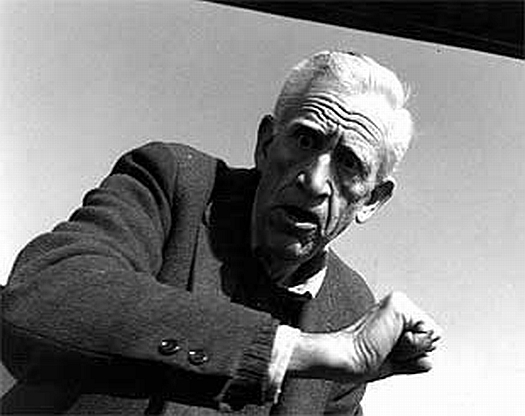| Performance Indicators:
P.S ELA-2 Reading Analysis: Cite strong and thorough textual evidence to support analysis of what the text says explicitly as well as inferences drawn from the text, including determining where the text leaves matters uncertain. A. Evaluate the relevant themes and synthesize how they are present in the novel in oral and written responses. P.S ELA-3 Reading Craft and Structure: Determine an author’s point of view or purpose in a text in which the rhetoric is particularly effective, analyzing how style and content contribute to the power, persuasiveness or beauty of a text. A. Understand SOAPSTone: Speaker, Occasion, Audience, Purpose, Subject, Tone |
In order to analyze and appreciate a story fully the reader is best to remember that a writer writes about what he knows. During his lifetime J.D. Salinger led a private if not recluse life. He reportedly mistrusted the media and thus he abstained from providing interviews about his work and his life. A study of his life reveals, however, that much of Salinger’s past lends insight to the meaning of his literature. Use the links and biography below in order to develop an understanding of what Salinger attempts to convey in The Catcher in the Rye.
Salinger’s Obituary
J.D. SalingerResources:
J. D. Salinger’s Daughter’s Memoir of her father
Movie- My Salinger Year
By KENNETH SLAWENSKIFEB. 10, 2011
In the opening lines of The Catcher in the Rye, Holden Caulfield refuses to share his parents’ past with the reader, deriding any recount of “how they were occupied and all before they had me, and all that David Copperfield kind of crap.” “My parents,” he explains, “would have about two hemorrhages apiece if I told anything pretty personal about them.” This apparent elusiveness on the part of Holden’s parents was imported directly from the attitudes of Salinger’s own mother and father. Sol and Miriam rarely spoke of past events, especially to their children, and their attitude created an air of secrecy that permeated the Salinger household and caused Doris and Sonny to grow into intensely private people.
The Salingers’ insistence upon privacy also led to rumors. Over the years, Miriam and Sol’s story has been repeatedly embellished. This began in 1963 when the literary critic Warren French repeated a claim in a Life magazine article that Miriam had been Scotch-Irish. In time, the term “Scotch-Irish” transformed itself into the assertion that Salinger’s mother had actually been born in County Cork, Ireland. This led in turn to what is perhaps the most commonly repeated story told about Salinger’s mother and father: that Miriam’s parents, supposedly Irish Catholic, were so adamantly opposed to her marriage to Sol, because he was Jewish, that they gave the couple little choice but to elope. And, upon learning of their daughter’s defiance, they never spoke a word to her again.
None of this has any basis in fact, yet by the time of her death in 2001, even Salinger’s sister, Doris, had been persuaded that her mother had been born in Ireland and that she and Sonny had been purposely denied a relationship with their grandparents.
The circumstances surrounding Miriam’s family and her marriage to Sol were quite painful enough without embroidery through rumor. However, Salinger’s parents exacerbated that pain by attempting to conceal their past from their children. In doing so, they not only invited fictitious versions of their history but confused their children too. By attempting to restrain Doris’s and Sonny’s natural curiosity, Miriam and Sol actually gave credence to a fabricated past that remained with them all their lives.
Sonny’s mother was born Marie Jillich on May 11, 1891, in the small midwestern town of Atlantic, Iowa. Her parents, Nellie and George Lester Jillich, Jr., were twenty and twenty-four, respectively, at the time of her birth, and records show that she was the second of six surviving children. Marie’s grandparents George Lester Jillich, Sr., and Mary Jane Bennett had been the first Jillichs to settle in Iowa. The grandson of German immigrants, George, Sr., had moved from Massachusetts to Ohio, where he met and married his wife. He served briefly with the 192nd Ohio Regiment during the Civil War, and after he returned home in 1865, Mary Jane gave birth to Marie’s father. George, Sr., eventually established himself as a successful grain merchant and by 1891 was in a firm position as head of the Jillich clan, with his sons George, Jr., and Frank following him into the trade.
Although Marie later maintained that her mother, Nellie McMahon, had been born in Kansas City in 1871, the daughter of Irish immigrants, four sets of federal census records (1900, 1910, 1920, and 1930) suggest that she is more likely to have come from Iowa. Family tradition has it that Marie met Solomon early in 1910 at a county fair near the Jillich family farm (an unlikely location since no such farm existed). The manager of a Chicago movie theater, Solomon, who was called “Sollie” by his family and “Sol” by his friends, was six feet tall with a whiff of big-city sophistication. Just seventeen, Marie was an arresting beauty, with fair skin and long red hair that contrasted with Sol’s olive complexion. Their romance was immediate and intense, and Sol was determined to marry Marie from the start.
A rapid series of events, some of them heartbreaking, would occur that year, culminating in Marie’s marriage to Sol in the spring of 1910. While the Salingers had steadily improved their position since Simon’s arrival, the Jillichs had suddenly encountered difficulties. Marie’s father had died the previous year. Unable to keep the family afloat, her mother had taken the youngest of the children and relocated to Michigan, where she later remarried. Marie did not move with her mother, because of her age and her relationship with Sol. Her swift romance and marriage to Solomon, therefore, proved to be providential, especially when, by the time of Sonny’s birth in 1919, her mother, Nellie, had also died.9 The loss of both parents was possibly enough to make Marie reluctant to discuss them even with her own children. Rather than cling to the past, she devoted herself completely to a new life with her new husband. Left with only the Salingers now as family, she sought their acceptance by embracing Judaism and changing her name to Miriam, after the sister of Moses.
Simon and Fannie thought that Marie, with her milky-fair skin and auburn hair, looked like “a little Irisher.” In a city with thousands of eligible Jewish girls, they never dreamed that Sollie would bring home a red-haired Gentile from Iowa, but they accepted Miriam as their new daughter-in-law, and she soon moved into their Chicago home.
Miriam joined Sol working at the movie theater, where she sold tickets and concessions. Despite their efforts, the theater was unsuccessful and was forced to close, sending the new bridegroom in search of employment. He soon found a position working for J. S. Hoffman & Company, an importer of European cheeses and meats that went by the brand name Hofco. After the disappointment with the theater, Sol swore never to fail at business again and applied himself to his new company duties with devotion. This dedication paid off, and after Doris’s birth in December 1912, he was promoted to general manager of Hoffman’s New York division, becoming, as he coolly declared, “the manager of a cheese factory.”
Sol’s new position required the Salingers to move to New York City, where they settled into a comfortable apartment at 500 West 113th Street, close to Columbia University and the Cathedral of Saint John the Divine. Although Sol was now in the business of vending a series of hams — distinctly the most unkosher of foods — along with his cheeses, he had managed to continue the Salinger custom of advancing beyond the previous generation, an accomplishment of which he was extraordinarily proud. But business became his life, and by the time of his thirtieth birthday in 1917, his hair had gone completely “iron grey.”
Excerpted from J. D. Salinger by Kenneth Slawenski Copyright © 2011 by Kenneth Slawenski. Excerpted by permission of Random House, a division of Random House, Inc. All rights reserved. No part of this excerpt may be reproduced or reprinted without permission in writing from the publisher.

“..What gets me about D.B., though, he hated the war so much, and yet he got me to read this book A Farewell to Arms last summer. He said it was so terrific. That’s what I can’t understand. It had this guy in it named Lieutenant Henry that was supposed to be a nice guy and all. I don’t see how D.B. could hate the Army and war and all so much and still like a phony like that. I mean, for instance, I don’t see how he could like a phony like that and still like that one by Ring Lardner, or that other one he’s so crazy about, The Great Gatsby. D.B. got sore when I said that, and said I was too young and all to appreciate it, but I don’t think so. I told him I liked Ring Lardner and The Great Gatsby and all. I did, too. I was crazy about The Great Gatsby. Old Gatsby. Old sport. That killed me. Anyway, I’m sort of glad they’ve got the atomic bomb invented. If there’s ever another war, I’m going to sit right the hell on top of it. I’ll volunteer for it, I swear to God I will.”
The Catcher in the Rye
Jerome David Salinger, b. New York City, Jan. 1, 1919, established his reputation on the basis of a single novel, The Catcher in the Rye (1951), whose principal character, Holden Caulfield, epitomized the growing pains of a generation of high school and college students. The public attention that followed the success of the book led Salinger to move from New York to the remote hills of Cornish, N.H. Before that he had published only a few short stories; one of them, “A Perfect Day for Bananafish,” which appeared in The New Yorker in 1949, introduced readers to Seymour Glass, a character who subsequently figured in Franny and Zooey (1961) and Raise High the Roof Beam, Carpenter and Seymour: An Introduction (1963), Salinger’s only other published books. Of his 35 published short stories, those which Salinger wishes to preserve are collected in Nine Stories (1953).
Bibliography: French, Warren, J. D. Salinger, rev. ed. (1976); Grunwald, Henry A., ed., Salinger: A Critical and Personal Portrait (1962); Hamilton, Ian, In Search of J. D. Salinger (1988); Lundquist, James, J. D. Salinger (1978); Miller, James E., Jr., J. D. Salinger (1965).
Text Copyright © 1993 Grolier Incorporated



